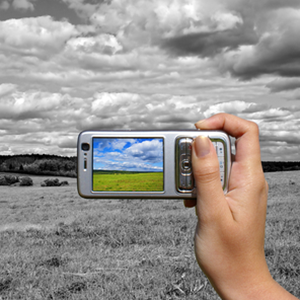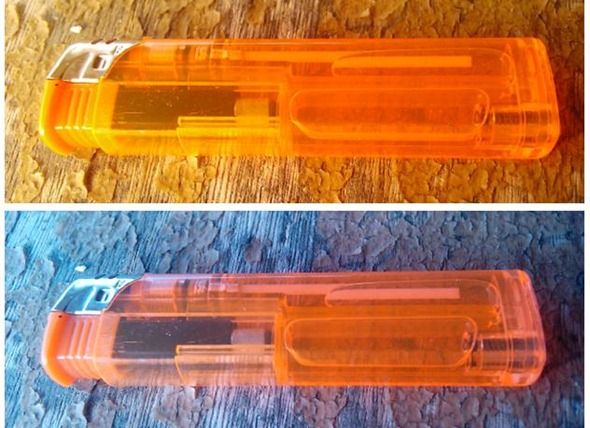Smartphone and mobile photography are becoming increasingly popular. And no wonder. Every year, mobile and smartphone cameras get better and better, until many people don’t feel the need to carry real cameras around anymore. While phone cameras still can’t replace good SLRs, they’re a very good match for the compact cameras, and since your phone comes everywhere with you anyway, it also becomes your go-to camera.
Just because your phone is your default camera, however, doesn’t mean you need to be taking bad photos. While some cameras are better than others, you can take beautiful photos even with a 5MP, 2560pixel X 1920 pixel camera like the one that comes with my old Acer Liquid E. All you have to do is take a few extra seconds to think about what you’re doing, and follow the tips below. Happy shooting!
Lighting is Everything
As with any camera, lighting is extremely important, and it’s doubly important if you’re using a phone camera. While some modern phones come equipped with a very good camera, most smartphone cameras still need all the help they can get to come up with a good enough photo. This is where lighting becomes your best friend.
It’s not always possible to control it, but there are two important points you want to keep in mind: 1) you need light. 2) you don’t need direct light. Getting your subject to stand in non-direct sunlight (best) or non-direct artificial light (second best), can make the difference between a bad photo and a good one.
No Zoom For You
Optical zoom is great, but when it comes to phone cameras, you’re pretty much stuck with digital zoom. This means the optics of the camera don’t actually change, the image doesn’t actually come any closer. Rather, digital zoom basically takes the portion of the image you’re aiming at, and expands it to fit the entire screen, much like you would zoom in on your computer. When you do this, you get low-resolution images, which are of lower quality than non-zoomed ones. So use your legs and hands instead, and just get closer to your subject. If you must use your zoom to get your subject in sight, you might want to give up on this photo altogether.
Steady Does It
This goes without saying, but it’s still important to keep in mind. When using any camera, and especially a somewhat inferior one, you want to keep your hands as steady as possible. Try leaning your elbows or hands on a steady surface while taking your photo, you’ll be surprised at the difference this can make.
White Balance
Many phone cameras and apps come with the option to control white balance. Adjusting your white balance makes sure the colors you capture are as accurate as possible, considering the lighting you have available. White balance controls usually include an “auto” option, and other options such as “daylight”, “cloudy”, “fluorescent”, “incandescent”, etc. While the “auto” option is sometimes good enough, you can get much better results when adjusting the white balance to match your lighting. So if you know you’re going to be taking several pictures indoors under a yellow light bulb, it could pay off to take an extra minute and adjust your white balance.
Get Up Close & Personal
This is an extension of the “no zoom” section, but it’s more than just not using your zoom. If you want to take a picture of something, take a picture of it. This doesn’t apply when taking photos of views and such, but when photographing objects, it can make a world of difference. So don’t be lazy!
Avoid Flash
Flash is the source of all evil in the world. Well, at least in the world of amateur photography. I’m always amazed at how often cameras “tell” you to use flash when it’s really unnecessary. True, phone cameras can’t always handle low light, but if you can’t do it without flash, you might not want to do it at all. Since I don’t have hardware flash on my own mobile device, I used a different one which also has a better camera. The example above is somewhat exaggerated, but it’s a good demonstration of how flash can ruin a photo, even when the lighting is not the best.
Filters Are Great, But They Don’t Make A Photo
Everyone loves filters. Whether you like the really exaggerated ones, the retro ones or the subdued and minimalistic ones, filters and effects can help you bring the most out of your photos. If used wisely. What they usually can’t do, is take a bad photograph and turn it into a good one. So don’t rely on filters so save your day – take good photos, and enhance them with filters. Don’t overdo it, or you end up with a bad photo regardless. It’s as simple as that.
Bottom Line
The tips above, when followed, can help you create some beautiful photos with your mobile device. Naturally, it still requires creativity and a good eye, but following some technical pointers is always a good start. But is it worth it? Or are you better off just using a real camera? Do you have any mobile photography tips you want to share? We’re waiting for your comments!
Image Credit: phone camera photo via Shutterstock








